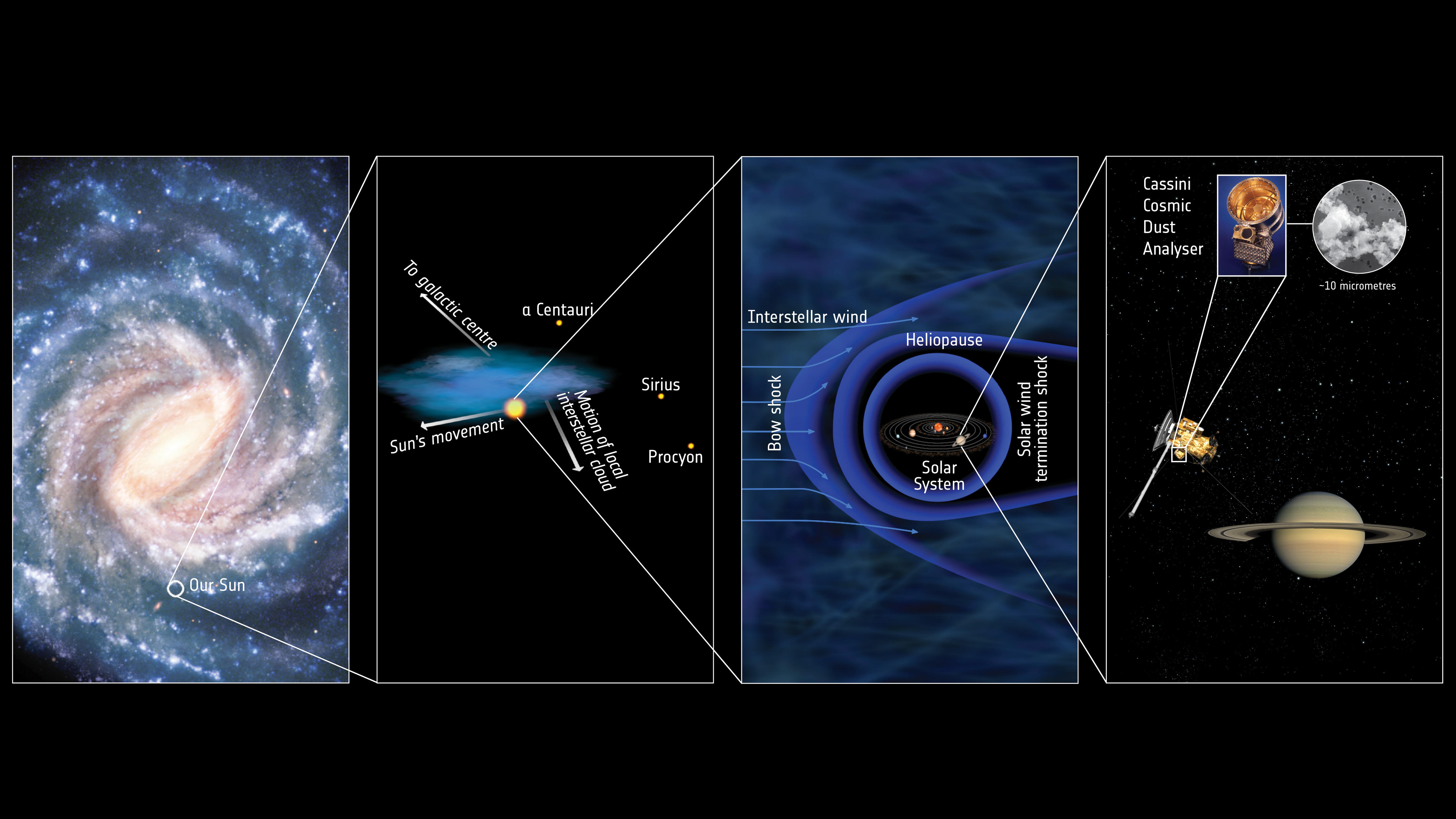Department of Earth Sciences
Service Navigation
Composition of Interplanetary and Interstellar Dust in our Solar System
During the formation of our solar system, most presolar dust grains were destroyed or heavily processed. A minor population of circumstellar presolar grains survived processing in the protosolar disk and can be recognized by their extremely diverse isotopic composition. In contrast, the solar system as part of our galaxy, is constantly subject to interstellar material made of dust and gas, that passes through our solar system. These contemporary interstellar dust particles (IDP) can be analyzed in situ from a spacecraft or can be captured and brought back to Earth by a sample-return mission.
The Cosmic Dust Analyzer (CDA) aboard the Cassini spacecraft for the first time carried out compositional in situ analysis of contemporary interstellar dust. In a 10-year campaign the mass spectrometer of the instrument recorded impact ionization spectra of 36 IDP (Altobelli, Postberg et al., Science 2016). These findings changed the view on processing of dust & gas in interstellar space.
Germany has gained important competencies in the field of space sensor technologies in recent years, especially through Cassini‘s CDA project. Under the leadership of PD Dr. Ralf Srama at the University of Stuttgart’s Institute of Space Systems (IRS), preparations are being made for the development of a new dust telescope, the Destiny+ Dust Analyzer (DDA) for the Japanese Destiny+ mission that is prepared for launch in 2024. Destiny+ was designed by JAXA to acquire the compact deep space explorer technology, fly-by observation of a meteor shower parent body, and in situ analysis of interplanetary dust. It will conduct flyby exploration of the asteroid 3200 Phaethon, which is well known as a parent body of a meteor shower. Understanding meteor shower parent bodies as known dust sources are critical in addressing the fundamental questions on transport of extraterrestrial organics to Earth. Prof. Frank Postberg, the head of our research group, is Co-Investigator of the DDA experiment on-board Destiny+.
The Cosmic Dust Analyzer on Cassini has detected the faint but distinct signature of dust coming from outside our Solar System, from the local interstellar cloud. This graphic summarizes the location of Saturn, the Solar System, and our place in the Milky Way galaxy. In the final image an artist impression of the Cassini spacecraft is shown (not to scale) with Saturn. The dust grain shown for illustrative purposes is an example of an interplanetary dust particle, likely originating from a comet or asteroid.
Participants in the Interplanetary and Interstellar Dust project
